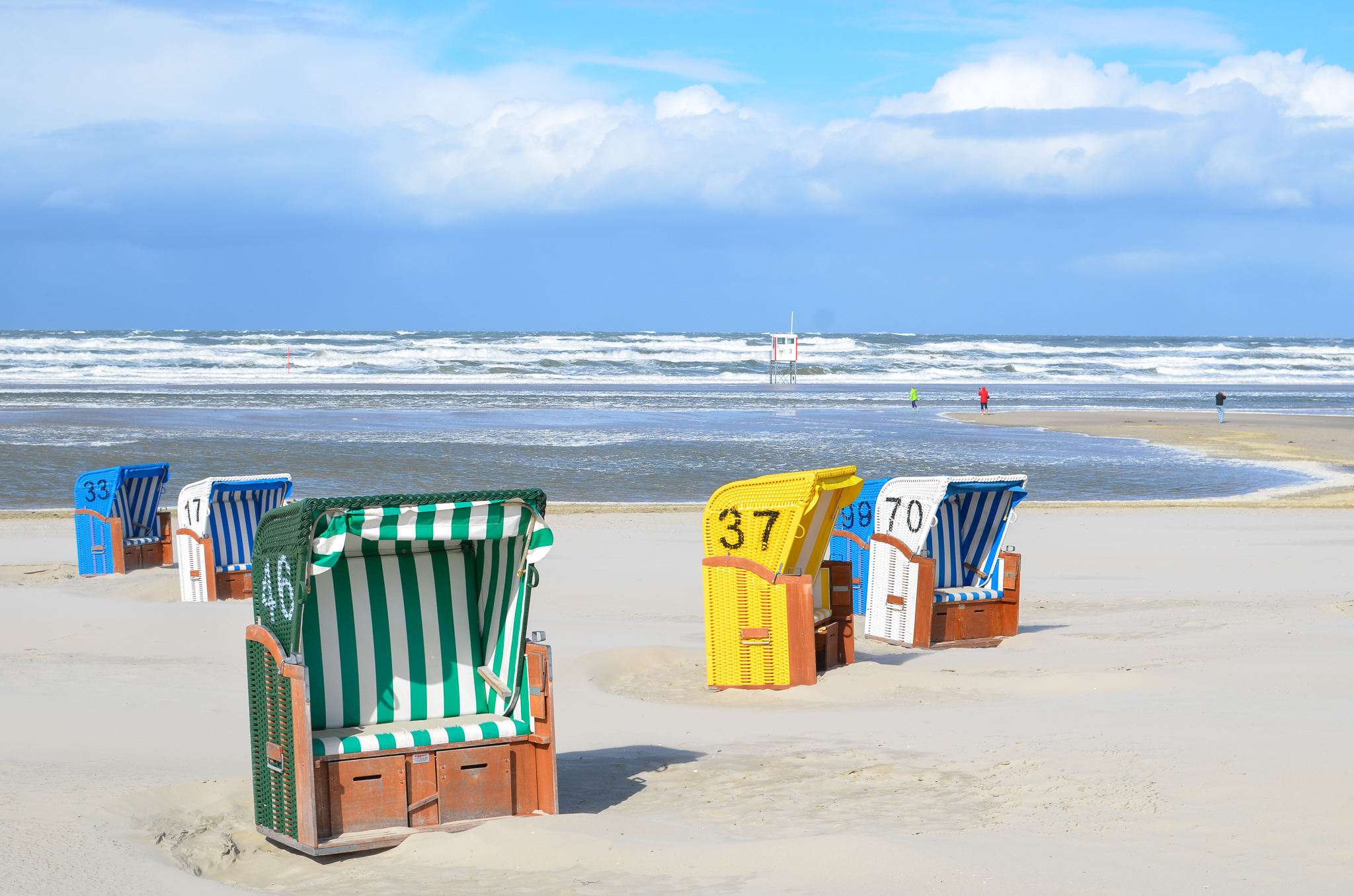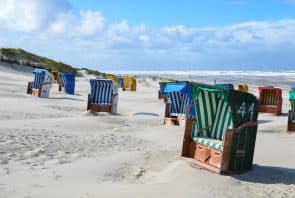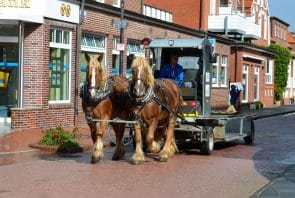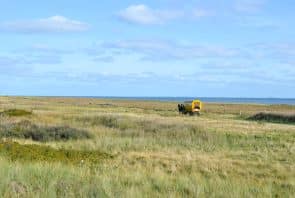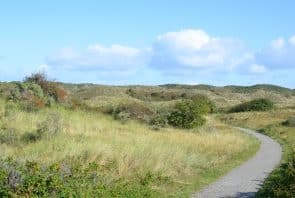by Rosa Koppelmann (www.consciouslifestyleofmine.com)
A place where no cars are allowed to drive, horse-drawn carriages set the pace and the nearest beach is never more than 500 meters away – that’s the North Sea island of Juist! The island is located in the Wadden Sea of Lower Saxony and, with a length of 17 kilometres, is the longest of the East Frisian islands. At its widest point, the island measures 900 meters, at its narrowest just 500 meters.
There are two villages on Juist: the main town, which is divided into Westdorf and Ostdorf, and the smaller Loog. The harbour and most of the hotels are located in the main town. Here you will also find supermarkets and other shopping facilities. Loog, on the other hand, offers more peace and even more individual holidays.
Everyday life on Juist is determined by the tides: because passenger and transport ships can only sail at high tide. As a result, many things on the island run a little slower than on the mainland. This is exactly what makes Juist so charming, because nowhere else can you slow down as well as here!
Discover Juist by bike and on foot
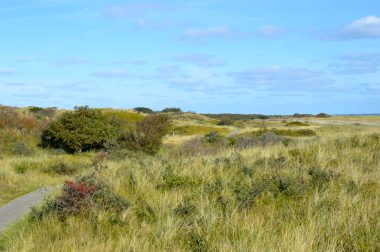
With a length of 17 kilometres, Juist is a fairly manageable island – and yet you can experience a lot here! The island is very easy to discover by bike and since there are no cars on the island, you can drive freely and relaxed here. But even if you don’t want to rent a bike, there is a lot to see and experience here!
Everyone who visits Juist sooner or later goes to the wide, white sandy beach that stretches along the entire length of the island. Here you can rent a beach chair and watch the hustle and bustle of the visitors, take a long walk, or make yourself comfortable on one of the less visited beach sections.
From the beach you go directly into the dunes, where you can go on beautiful hikes on wooden paths. A popular route is the Otto-Leege-Pfad. In the 1920s, the biologist Otto Leege had over 50,000 wind-resistant trees planted on the island and in his memory a nature and art trail was created that brings visitors closer to nature in a very vivid way. The flora and fauna on Juist is incredibly diverse: yes, in fact, you can find around a quarter of the German flora and a fifth of the German fauna on the East Frisian Islands! With a share of 0.03 percent, measured against the total area of Germany, this is quite impressive!
The most beautiful excursion destinations on Juist
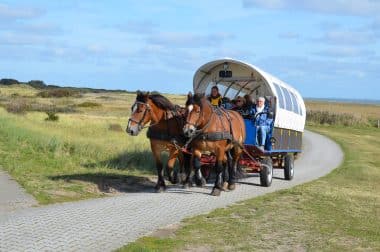
Both on the island and on the sea there are some fascinating excursion destinations. As soon as you arrive on the island, you will see the Memmertfeuer lighthouse. In the summer months, you can climb to a small viewing platform on top of the lighthouse. From here you are directly on the main street, where there are shops, cafes and restaurants. The Juist town hall with tourist information can also be found here.
If you are in the Wadden Sea for the first time, you should not miss a mudflat hike on Juist. The experience is as unique as the Wadden Sea itself! Another must-see is the Bill, which is located at the west end of the island; where the North Sea and the Wadden Sea meet. Domäne Bill, which is located just before the large sandbanks, serves the world-famous raisin mares and delicious coffee specialties, which can be enjoyed either in the café or on the green dike overlooking the mudflats. The best way to get to the domain is by bike or horse-drawn carriage. Tickets for the approximately one-hour carriage ride can be easily purchased at the travel agency on the main street.
A bike tour to the Hammersee is also a nice excursion by bike or on foot; the largest freshwater lake in the East Frisian Islands was created in 1932 when the dune dike was built. Here, too, there is a paved hiking trail that allows you to walk around the lake without upsetting the flora and fauna.
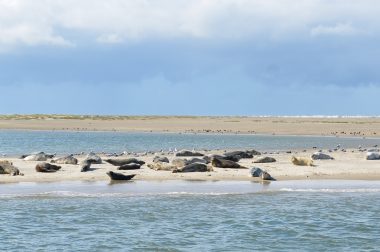
If you like to be on the water, you should definitely book a boat trip to the seal banks. A small ferry takes you from the harbour across the sea. After about an hour, you will reach the seal banks and can watch from the ship as the fascinating, strong animals crawl into the water, emerge from the sea and roll comfortably back and forth on the beach.
Holidays with children on the island
The North Sea island of Juist is the ideal holiday destination for families, because there is hardly a place that is safer: there are no cars here and the children can move freely. The wide sandy beach is probably the most beautiful sandpit in the world and there are large well-equipped playgrounds both directly on the beach and at the harbour. There is also a seawater wave pool on Juist for rainy days and an informative exhibition about the Wadden Sea in the National Park House in the old train station. In summer, there are theatre performances, beach parties or football tournaments specially designed for children between 4 and 15 years old. In addition, the island hosts the children’s university “Sustainable Living” from the end of June to the beginning of September. Here, topics such as climate change, climate protection and sustainability are dealt with in a playful way. The events are designed so that the children can participate independently.
Sustainability on Juist
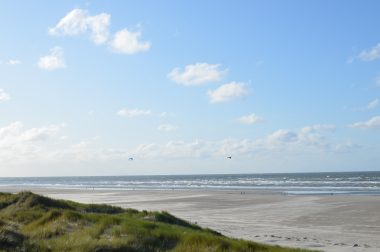
Due to its location in the middle of the North Sea, Juist is directly affected by climate change: rising sea levels, heavy stumbling and dune collapse in the west pose a concrete threat to the island. Due to the direct threat, the island has set itself the goal of being climate neutral by 2030.
To achieve this goal, the island has taken various measures. First, in 2016, Juist took part in the world’s first forum for the sustainable development of European islands: the Smart Island Forum. The Smart Islands Forum brings together the expertise of the islands facing similar challenges. Island regions can also be increasingly used as test balloons for technological, economic, social and political innovations.
Juist not only discusses, but also implements! The island is car-free: even goods, goods and entire removals are transported by horse-drawn carriages. Swiss Post only uses an electric vehicle for the distribution of parcels. The police ride their bikes, just like most residents and guests. Only doctors, fire brigades and the German Red Cross are allowed to use motor vehicles.
The island’s water supply is autonomous: under the island there is a freshwater lens, which is tapped alternately through several wells. The freshwater lens rises when it rains. Thus, the island is directly dependent on rainwater. The water enters the waterworks and is treated there. It is subject to the strictest legal regulations, which are continuously reviewed; so the water can be used as drinking water. Guests are asked to bottle the tap water. This means that less bottled water has to be transported from the mainland and resources can be saved.
So you can not only simply experience a wonderful, relaxed holiday on Juist, but you can also be sure that you are not overstretching your CO2 footprint!
Impressions of the North Sea island of Juist


